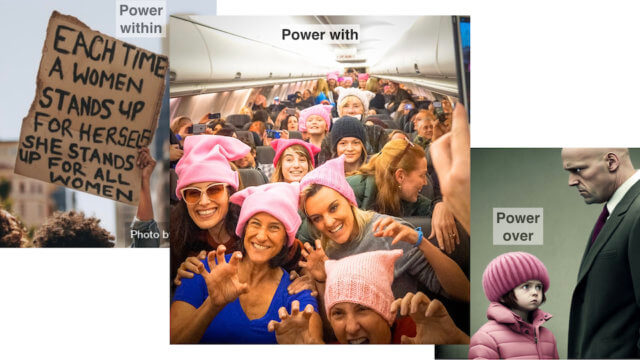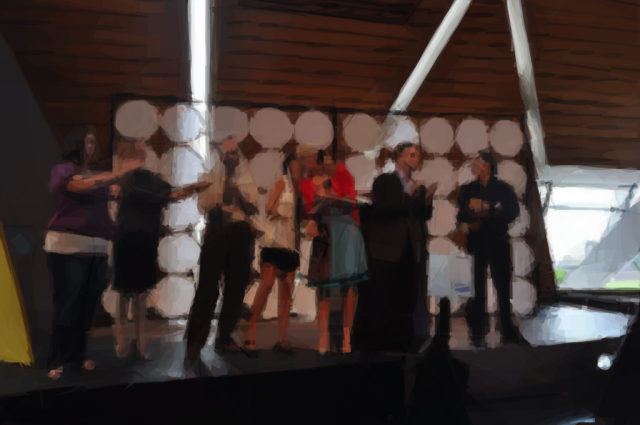Status and power at meetings
Meeting professionals rarely talk about status and power issues. This is unfortunate because the ways that status and power manifest at meetings matter. Why? Because a majority of those who attend most meetings have little say over what happens at them. Typical meeting formats are rigid, and attendees play largely circumscribed roles.
So, let’s explore the roles of status and power at meetings.
Every meeting has a structure
As Jo Freeman wrote half a century ago, every meeting has a structure.
“Contrary to what we would like to believe, there is no such thing as a structureless group. Any group of people of whatever nature that comes together for any length of time for any purpose will inevitably structure itself in some fashion. The structure may be flexible; it may vary over time; it may evenly or unevenly distribute tasks, power and resources over the members of the group. But it will be formed regardless of the abilities, personalities, or intentions of the people involved.”
—Jo Freeman aka Joreen, The Tyranny of Structurelessness, 1972
Meetings usually adopt traditional structures that attendees seldom question in public. Such structures contain status and power imbalances that can often reduce the effectiveness of the meeting. Meetings that are consciously designed to best fit the needs and wants of all the stakeholders are rare.
Hierarchy isn’t (necessarily) a problem
When we look at a meeting in progress, it’s usually easy to spot any hierarchy that’s present. For example:
- The chairperson sits at the end of the table.
- Speakers, board members, and panelists face everyone else.
- Name badges signal high-status roles.
- Only certain people get a microphone.
Hierarchy leads to overt or covert status differences. However, the existence of hierarchical or status differences isn’t necessarily a problem. A high-status, experienced chairperson, for example, may guide a board meeting through a complex agenda far more effectively than if the gathering is structured as a free-floating discussion. Similarly, a clear interactive presentation from an experienced expert to an audience of novices can be an effective way to share important information about a relevant topic.
In addition, when meeting designs support fluid status differences between attendees, hierarchy is rarely a problem. (Here’s how peer conferences support fluid status differences.)
However, hierarchy frequently impedes meeting effectiveness when high-status members use the power imbalance between them and other attendees to impose a meeting structure that suits their purposes.
Status and power at meetings
In 2017, I wrote about Tom Atlee’s discussion of two kinds of power: power-over and power-with (terms that Mary Parker Follett formulated a hundred years ago) and advocated for meetings where power-with holds sway. Richard Bartlett added a third relevant form of power: power-within. Here are his definitions of these “three useful lenses for analyzing…power dynamics”.
- Power-from-within or empowerment — the creative force you feel when you’re making art, or speaking up for something you believe in.
- Power-with or social power — influence, status, rank, or reputation that determines how much you are listened to in a group.
- Power-over or coercion — power used by one person to control another.
—Richard D. Bartlett, Hierarchy Is Not the Problem…It’s the Power Dynamics
Here’s a brief overview of each of these kinds of power dynamics from a meetings perspective.
Power-within

I go into a lot more detail in my books about why these tools are so important. Check out The Power of Participation for deeper explanations.
Power-with

Power-over

When power-over meeting dynamics are appropriate and relatively benign
Specifically, power-over dynamics can work reasonably well for meetings when a high-status leader:
- Has significantly more expertise and experience than anyone else present;
- Is good at communicating what’s necessary via broadcast; and
- Is benevolent.
An example would be a high-level, experienced bureaucrat who has the job of teaching the implications of a complex set of new tax regulations to a group of customer service employees who answer tax questions.
Even in situations like this, reducing perceived status can improve the meeting. For example, creating a relaxed and supportive environment for questions and discussion plus breaking regularly into small groups to process learning will improve adult learning better than lecturing followed by testing.
Power-over meeting dynamics are often toxic
But if you’ve ever had low status at a meeting—and who hasn’t?—you’ve likely often experienced toxic power-over dynamics. For example:
- Teachers publicly humiliate students in class.
- Bosses pressure subordinates to make unwise or unfair decisions at meetings or avoid uncomfortable topics.
- Arrogant people interrupt others and monopolize discussions at conference sessions.
We experience power imbalances like these at an early age, and many come to assume they’re “just the way things are”. I’ve written elsewhere about how power-over meeting design became so pervasive (and there’s an expanded version in Chapter 2 of The Power of Participation.)
What’s been fascinating to me during my decades of designing and facilitating meetings is how good meeting design can minimize power differentials between participants, and invariably just about everyone discovers that the meeting improves for them! (Even including the vast majority of the folks with more power!)
Conclusions about power dynamics at meetings
Two essential things meeting designers and facilitators should do to create effective meetings is to support power-within and maximize power-with for participants. Do these well and you will simultaneously reduce the deleterious effects of power-over at your events.
This post was inspired by Richard D. Bartlett‘s article Hierarchy Is Not the Problem…It’s the Power Dynamics. Richard covers work relationships while I have focused on applying his analysis to meetings. Richard also includes suggested steps towards healthy power dynamics at work—well worth reading!
Images courtesy of:
Jacob Lund Photography: Activist Demonstrating Women Power from NounProject.com
Ted Eytan (2017.01.20 Alaska Air Flight 6 in Pink LAX-DCA) CC BY-SA 2.0


 We all want to create powerful meetings, but the opportunity is often missed.
We all want to create powerful meetings, but the opportunity is often missed.